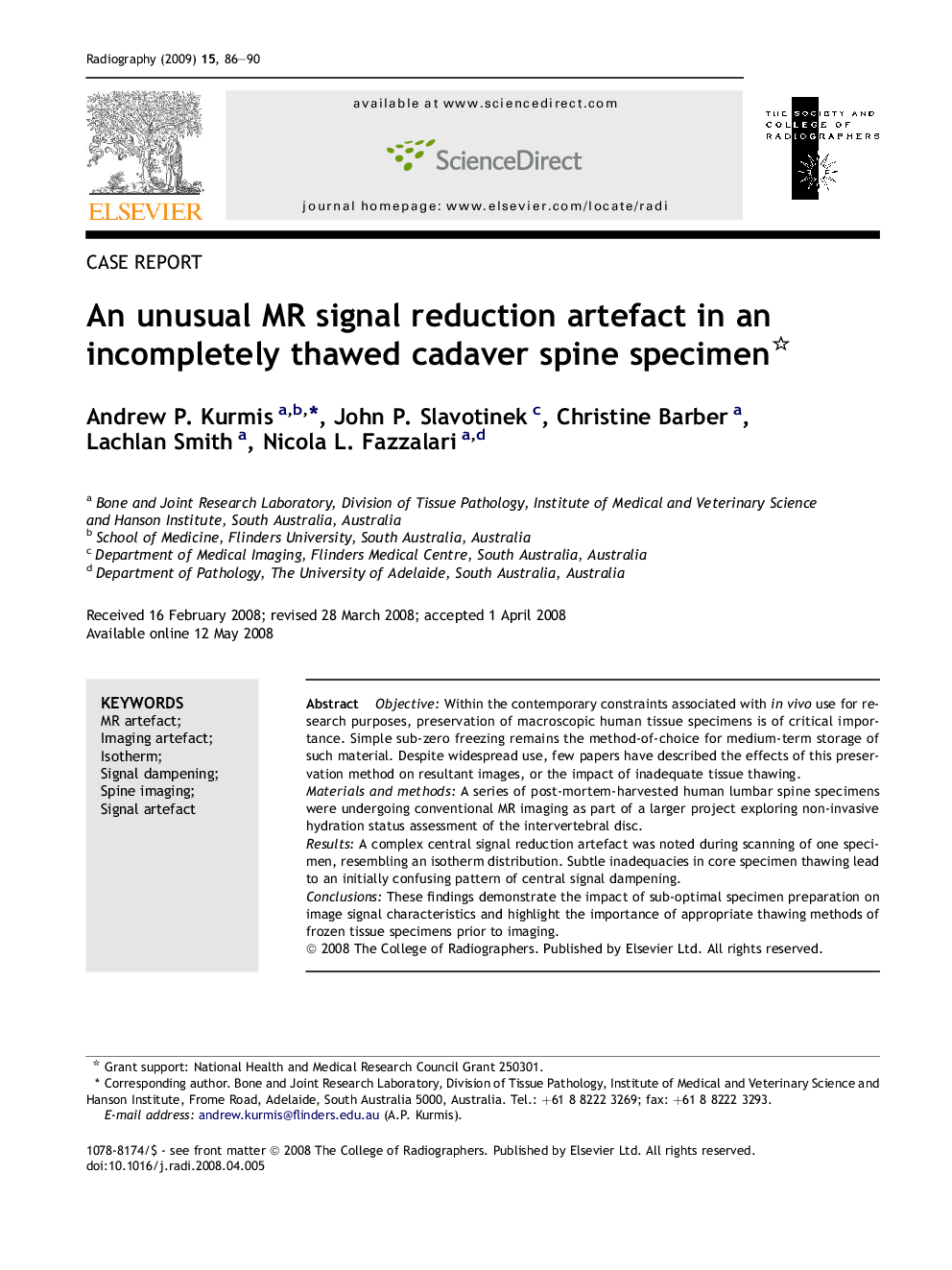| Article ID | Journal | Published Year | Pages | File Type |
|---|---|---|---|---|
| 2737534 | Radiography | 2009 | 5 Pages |
ObjectiveWithin the contemporary constraints associated with in vivo use for research purposes, preservation of macroscopic human tissue specimens is of critical importance. Simple sub-zero freezing remains the method-of-choice for medium-term storage of such material. Despite widespread use, few papers have described the effects of this preservation method on resultant images, or the impact of inadequate tissue thawing.Materials and methodsA series of post-mortem-harvested human lumbar spine specimens were undergoing conventional MR imaging as part of a larger project exploring non-invasive hydration status assessment of the intervertebral disc.ResultsA complex central signal reduction artefact was noted during scanning of one specimen, resembling an isotherm distribution. Subtle inadequacies in core specimen thawing lead to an initially confusing pattern of central signal dampening.ConclusionsThese findings demonstrate the impact of sub-optimal specimen preparation on image signal characteristics and highlight the importance of appropriate thawing methods of frozen tissue specimens prior to imaging.
